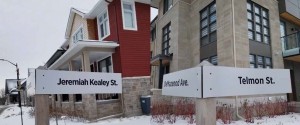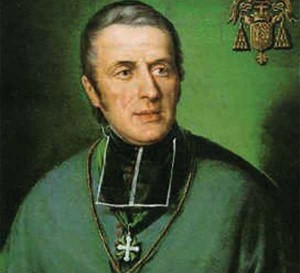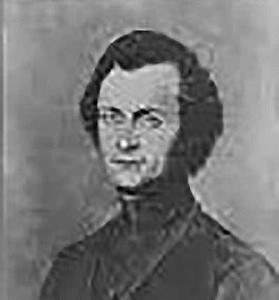Peter Tobin

The names of an early Ottawa settler and two of the guiding lights of the Oblate Order in Canada are commemorated with new street names in GreystoneVillage. Photos by Lorne Abugov
Residents within the Greystone Village development and other OOE dwellers may have wondered about the historical background to some of the new names given to some of the new streets within the development, such as Jeremiah Kealey Street and Telmon Street.
Who was Jeremiah Kealey? And who was Telmon Street named for? These two street names in Greystone Village seem to have no obvious relationship to the Oblate Fathers who occupied this part of Old Ottawa East for so many years.
Jeremiah Kealey, who was also known as Darby Kealey (since both Jeremiah and Darby are anglicization of the Irish name Diarmada) was born in Ireland in 1794 and arrived in what became Bytown around 1820. Thus, Jeremiah Darby Kealey was one of our very first Ottawa settlers, arriving well before Lieutenant-Colonel John By, for whom he undoubtedly worked in the building of the Rideau Canal. During his days in Ottawa, Kealey was a labourer, then a logger and finally a farmer. Kealey’s major acquisition was his 1856 purchase of 68 acres of land bounded by Main Street, the Rideau River, Lees Avenue and des Oblats Ave. A portion of that land was later sold to Robert Lees.
Kealey and his wife, Elizabeth raised a large family and their descendants must by now number at least one thousand strong. The internet is awash with Kealey offspring searching their connection back to Jeremiah. The Mainstreeter recently interviewed Jeremiah’s great-great-granddaughter. By press time, she will have moved into Greystone Village, just a shille lagh toss from Darby’s 68 acres.
Father Pierre-Adrien Telmon was a talented but troubled figure. Born in France in 1807, he arrived in Montreal in 1841. He was described as being “of a rebellious and impulsive disposition”. That said, when allowed to follow his own ideas, he was capable of great achievements. What he accomplished in Ottawa during the five year period he worked here was truly impressive.
In 1844, Father Telmon became the first Oblate to arrive in Ottawa, having been sent here by the Oblate founder, Bishop Eugene de Mazenod. Tasked with completing the construction of the parish church, he added neo-Gothic elements to what became the Notre Dame Cathedral on Sussex Drive. He also purchased land for the Oblates and built schools. Father Telmon played a key role in convincing Mother Elisabeth Bruyere and the Sisters of Charity to come to Bytown in 1845, and he built a house for their first hospital. When the typhoid epidemic broke out in Lowertown in 1847, Father Telmon added a wing to Mother Bruyere’s hospital. That was the forerunner of the Ottawa General Hospital. It would not be much of a stretch to say that Father Telmon was the mid-wife of the Ottawa General Hospital.

The Oblate order, which dominated the life of this community throughout
much of its history, was founded by Bishop Eugene de Mazenod. Image Supplied
A brief foray to Texas in 1849 proved to be Father Telmon’s undoing. Assuming incorrectly that he had the approval of the Oblate founder, Bishop de Mazenod, Telmon accepted an invitation from the local bishop to set up an Oblate mission in Brownsville, Texas. Months later, Bishop de Mazenod recalled Father Telmon to France where he spent the rest of his days until his death at age 70.







